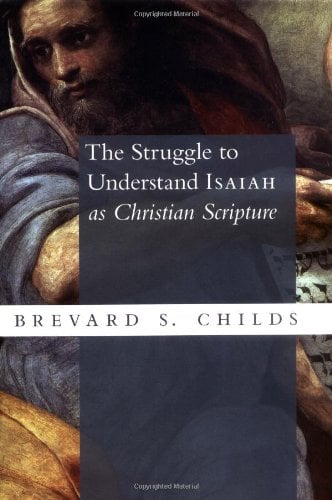Child’s analysis of Luther’s treatment of Isaiah involves a close reading of his lectures on the subject and he deduces the following things: 1) there are not a lot of references (occasionally he critiques Jerome or Origen or Nicholas— the latter in spite of the fact that he owes Nicholas’ quoting of Rashi for his own knowledge of Jewish exegesis of Isaiah). Yes, occasionally he also cites Josephus, but for all his stress on studying the historical context of Isaiah, what he mainly means is studying the other Biblical material of relevance; 2) he continues his polemics against Jews; 3) he reflects knowledge of the Biblical languages and insists one needs to understand both the historical context and the grammar of the text to understand the Bible; 4) he brings in reference to literary devices and forms learned from classical study— paranomasia, irony, simile, metaphor; 5) he offers his own fresh paraphrases of the text for the audience; 6) he says Isaiah falls into two parts, 1-39 and 40-66, a conclusion not based on style or authorship but subject matter; 7) the first half of Isaiah functions as historical prophecy and is about Christ and the defeat of Assyria; the second half is just prophecy and it focuses on Cyrus, externally, and then Christ with the last four chapters entirely about Christ. Luther speaks of Isaiah toggling back and forth between discussing Christ and his kingdom and discussing the kingdoms of his own world. The goal of all prophecy is to direct people towards the good news of salvation from God, and more particularly from Christ.
Childs stresses that Luther’s theology was dialectical in the modern sense of the term, juxtaposing opposites and holding them in tension—spirit vs. letter, gospel vs. law, spiritual vs. physical kingdoms, external vs. internal, old and new creation, sin vs. righteousness, faith vs. works, hidden vs. revealed, old vs. new Israel. But Childs is right to warn that did not lead to a rejection of the OT in favor of the new one.
Luther is famous for his two kingdoms theology, one the physical the other the spiritual kingdom. In this context Is. 34 is seen to refer to the church emerging out of the remnant of the synagogue. “The two kingdoms are not two entities, separated in time and space, for it is only out of the physical mountain that the spiritual kingdom emerges.” The spiritual kingdom is identified with the reign of Christ and accordingly all the promises of the coming redemption of Israel in Is. 40-66 are interpreted as being about Christ and his reign.
Luther often contrasts Law and Gospel, with Law seen as revealing sin and frightening the sinner, driving them to Christ, at which juncture the consolation of the Gospel was offered. Christ fulfilled the righteous demands of the Law, so the Christians has freedom in Christ. Is. 6 is seen as like a conversion story. The prophet despairs over his sin, then the angelic bearer of the good news promises forgiveness and imparts to him Christ’s righteousness. The comfort offered in Is. 40ff. is the comfort of the Christian Gospel and what follows is the painting of the picture of life in the Spirit. In Is. 11 the Spirit is seen as playing a major role in equipping the Messiah with wisdom, and might. Is. 7 involves a double sign—a negative one of judgment on Ahaz, but to the faithful a sign of the true Messiah. Is. 60 is said to speak of the darkness of the Law and the light of the Gospel.
In his exposition on Is. 2.1 Luther sys that after the Babylonian captivity, a part of Judah was preserved in order that it might be the seed for the coming reign of Christ. “Therefore this people could not be completely rejected until the lawful reign of Christ had come.” Yet on Is. 1.14 he says, referring also to Rom. 9.9 that because of the promise to Abraham there will always be Jews who belong to Christ. But he is not completely clear on this issue. Childs concludes his analysis by stressing “what he offered in his interpretation of say Is. 42,53,60 and 61 was an exercise in biblical theology’s reflections on both testaments.”













